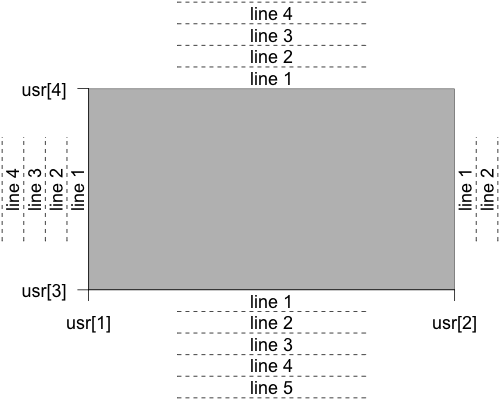
When we drop the numbers from those panels, it will create more white space. Not bad, but we still have redundancy by including numbers on the x-axis scale in the top left panel and the y-axis scale in the bottom right panel. Xlab=" ", ylab=" ", xlim=c(min.width,max.width), ylim=c(min.length,max.length)) We can start to reduce the redundancy in the figure by removing the labels for the x- and y-axes. It takes a little trial-and-error to hit on margins that produce the desired spacing. We can use the mai argument to the par function to specify the margin (in inches) of each panel in the figure. Plot(Sepal.Length~Sepal.Width, data=iris, subset=(Species="setosa"), Plot(Sepal.Length~Sepal.Width, data=iris, subset=(Species="versicolor"),

Xlab="Sepal Width", ylab="Sepal Length", xlim=c(min.width,max.width), Plot(Sepal.Length~Sepal.Width, data=iris, subset=(Species="virginica"), The empty panel can be placed in any of the 4 positions, but it is redundant to use plot.new for the bottom right panel because mfrow fills the graphics device by row, moving left to right along the row. An empty panel is created by calling plot.new.
Multipanel plot in r margin space code#
The next block of code plots 3 panels in a 2x2 arrangement 1 with mostly default options. To plot all the data on the same scale, we need to extract the max and min values of the variables that we are plotting. In this case, the data would be more effectively plotted in a single panel with different colors or symbols for each species, but with larger data sets the different colors/symbols can create a jumbled mess and multi-panel figures illustrate patterns in the data more clearly. The data set includes flower measurements for 3 iris species.
Multipanel plot in r margin space how to#
Below I will walk through how to adjust the spacing of the panels when using mfrow.įor this example, we will use Edgar Anderson’s iris data, which is distributed with R. The figures in that post were ugly because they used the default panel spacing associated with the mfrow argument of the par function. In a previous post, I showed how to keep text and symbols at the same size across figures that have different numbers of panels.


 0 kommentar(er)
0 kommentar(er)
